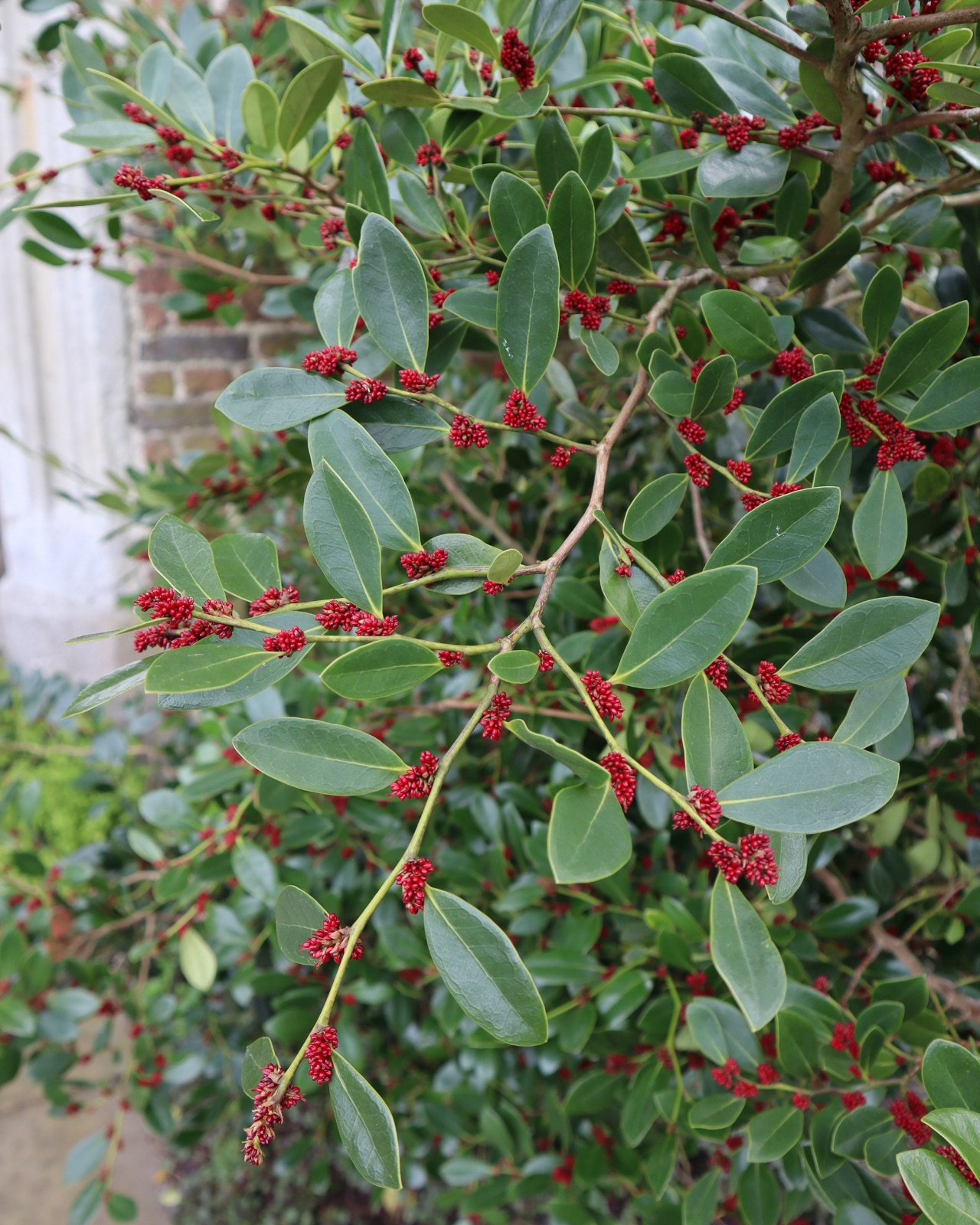Distylium racemosum
Credits
Article from Bean's Trees and Shrubs Hardy in the British Isles
Recommended citation
'Distylium racemosum' from the website Trees and Shrubs Online (treesandshrubsonline.
Genus
An evergreen shrub with rigid, short branches or a tree up to 60 ft; young shoots minutely warted. Leaves alternate, leathery, entire, narrow-oblong or obovate, tapering at the base to a short stalk, often blunt at the apex, 11⁄2 to 3 in. long, 1⁄2 to 11⁄4 in. wide, shining deep green, glabrous on both sides except when very young. Flowers sometimes unisexual, in small erect racemes about 1 to 11⁄2 in. long. There are no petals, but a five-parted, red, downy calyx, and several lurid purple stamens; flower-stalks covered with rusty-coloured scurf. Fruit semi-woody, downy, surmounted by the two styles which remain attached at the top, and to which the generic name refers. Bot. Mag., t. 9501.
Native of S. Japan, where it is an evergreen tree yielding, according to Sargent, an exceedingly hard, dark-coloured, valuable wood. In this country, however, it has never made more than a small, somewhat stiff shrub. It is hardy at Kew and grows well and flowers out-of-doors there in April and May. In the Edinburgh Botanic Garden there are several specimens, the tallest about 7 ft high. In the Glasnevin Botanic Garden, Dublin, the best example makes a spreading shrub 6 ft high and about 10 ft wide. It belongs to the curious rather than to the beautiful class of shrubs. Propagated by cuttings.

